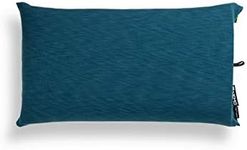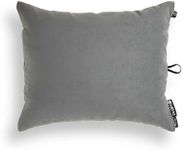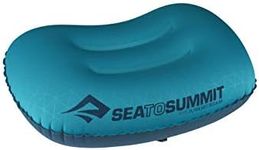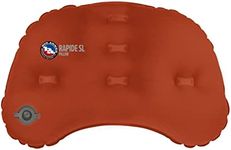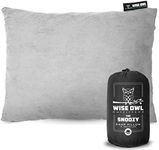Buying Guide for the Best Backpacking Pillows
Choosing the right backpacking pillow can make a big difference in how well you sleep outdoors. Since you'll be carrying everything on your back, it's important to find a pillow that balances comfort, weight, and packability. Think about your sleeping style, how much space you have in your backpack, and how much comfort you need to get a good night's rest. The best pillow for you will be the one that fits your personal preferences and the type of trips you take.WeightWeight refers to how heavy the pillow is, which is crucial for backpackers who want to keep their packs as light as possible. Lighter pillows are easier to carry over long distances, but they may sacrifice some comfort or support. Ultralight pillows usually weigh less than 3 ounces and are best for those who prioritize minimalism. Midweight options, around 3 to 7 ounces, offer a balance between comfort and portability. Heavier pillows, over 7 ounces, may provide more cushion but are better suited for shorter trips or those who don't mind carrying extra weight. Consider how much weight you're willing to carry and how important comfort is to you when choosing.
Packed SizePacked size is how small the pillow becomes when it's compressed for storage. A smaller packed size means it takes up less space in your backpack, which is important if you have limited room. Some pillows can be compressed to the size of a fist, while others are bulkier. If you have a small backpack or need to save space for other gear, look for pillows that pack down very small. If space isn't as much of a concern, you can opt for a larger, more comfortable pillow.
Material and FabricThe material and fabric of a backpacking pillow affect its comfort, durability, and how it feels against your skin. Common materials include soft polyester, nylon, or brushed fabrics. Some pillows have a soft, cozy surface, while others may feel more slippery or noisy. If you have sensitive skin or want a pillow that feels like your one at home, look for soft, brushed fabrics. If you need something easy to clean and durable, synthetic materials are a good choice. Think about your comfort preferences and any allergies you might have.
Support and LoftSupport and loft refer to how much the pillow props up your head and neck. Some pillows are inflatable and allow you to adjust the firmness, while others use foam or synthetic fill for a more consistent feel. Low-loft pillows are thinner and best for stomach sleepers or those who prefer less height. Medium-loft pillows suit most back sleepers, while high-loft pillows are good for side sleepers who need more support. Consider your usual sleeping position and how much support you need to avoid neck pain.
Inflatable vs. FilledBackpacking pillows generally come in two types: inflatable and filled. Inflatable pillows are lightweight and pack down very small, but they can feel less cushioned and may make noise when you move. Filled pillows use foam or synthetic fibers for a softer, quieter feel, but they are usually bulkier and heavier. If you want the lightest and most compact option, go for inflatable. If comfort is your top priority and you don't mind a bit more weight, a filled pillow might be better for you.
Ease of CleaningEase of cleaning is about how simple it is to wash your pillow after a trip. Some pillows have removable, machine-washable covers, while others need to be spot-cleaned. If you expect your pillow to get dirty or sweaty, look for one with a washable cover. If you only go on short trips or don't mind hand-washing, this may be less important. Think about how often you'll use the pillow and how much effort you're willing to put into cleaning it.




